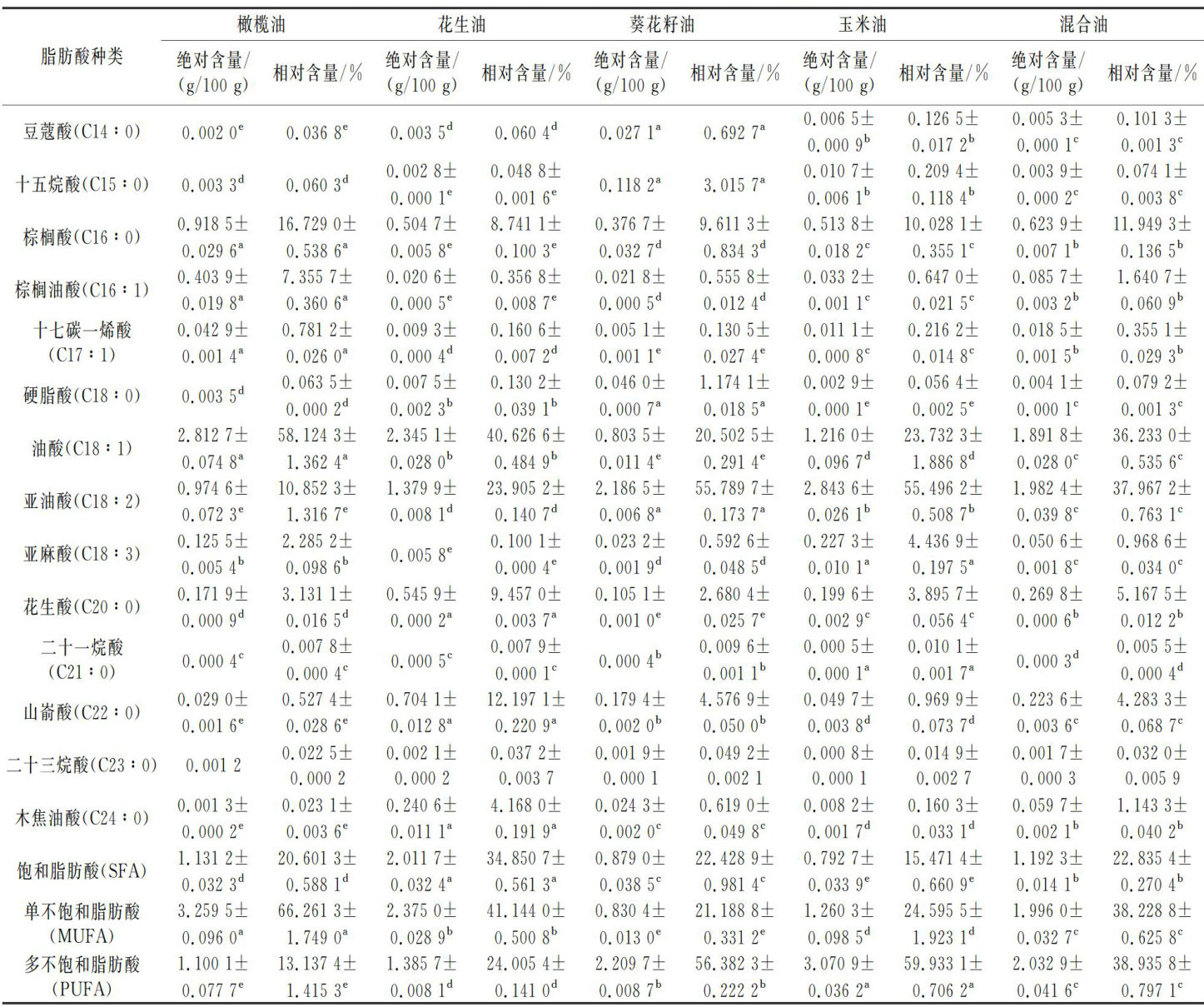基于低场核磁共振技术和傅里叶变换红外光谱的植物油种类判别可行性分析


打开文本图片集
中图分类号:TS225.1 文献标志码:A 文章编号:1000-9973(2025)07-0191-07
DOI:10.3969/j.issn.1000-9973.2025.07.028
Feasibility Analysis of Discrimination of Plant Oil Types Based on Low-Field Nuclear Magnetic Resonance Technology and Fourier Transform Infrared Spectroscopy
XIANG Yan,LU Jia-yi,HE Qiang,DENG Sha,DONG Yi* (College of Biomass Science and Engineering,Sichuan University,Chengdu 6lOo65,China)
Abstract: The adulteration phenomenon of plant oils often occurs, so the use of non-destructive and eficient methods to identifythe types of plant oils is an important direction for the technological development in the oil industry. In this paper,with five types of plant oils (olive oil,peanut oil,corn oil,sunflower seed oil and mixed oil)as the research objects,the feasibility of using low-field nuclear magnetic resonance (LF-NMR) technology and Fourier transform infrared spectroscopy(FTIR) to distinguish the types of plant oils is analyzed.Hierarchical cluster analysis (HCA) is conducted on faty acid components. The results show that five types of plant oils can be divided into three groups: corn oil and sunflower seed oil, peanut oil and mixed oil,and olive oil. LF-NMR combined with principal component analysis (PCA) could identify the linoleic acid-type plant oils (sunflower seed oil and corn oil)and theoleic acid-type plant oils (olive oil and peanut oil). FTIR combined with PCA could further identify the types of linoleic acid-type plant oils. In conclusion,it is feasible to use LF-NMR and FTIR to identify the types of plant oils, and the combination of the two methods has complementary effects. This study can lay a foundation for the rapid identification of edible oil adulteration.
Key words: plant oil; without destructiveness;identification of types;low-field nuclear magnetic resonance; Fourier transform infrared spectroscopy;principal component analysis
食用油脂是人类日常膳食中重要的组成部分,植物油是食用油脂的主要来源,全球食用植物油的产量和消费量均在逐年增长[1]。(剩余9966字)